The Use of Flipped Classrooms in Higher Education a Scoping Review
Introduction
Recent improvements in and access to digital technologies accept paved the manner for flipped classroom (FC) as an appealing, innovative, and motivating pedagogical instruction arroyo (Abeysekera and Dawson, 2015). Compared to traditional lectures often characterized by passive and transmissive modes of teaching, FC can be viewed as a "educatee-centered approach to educational activity and learning that emphasizes student engagement and agile learning" (Steen-Utheim and Foldnes, 2018, p. 308). Despite being around since the 2000s (cf. Baker, 2000; Lage et al., 2000), FC gained popularity with Bergmann and Sams (Bergmann and Sams, 2009, Bergmann and Sams, 2012) who were concerned virtually high schoolhouse students missing end-of-solar day classes.
Bergmann and Sams (Bergmann and Sams, 2012, p. 13) country that the basic concept of FC is "that which is traditionally washed in class is at present done at home, and that which is traditionally done as homework is now completed in class." Building on the former definition, Bishop and Verleger (2013, p. v) underline 2 aspects of FC: (1) "interactive group learning activities inside the classroom" and (2) "direct reckoner-based individual instruction outside the classroom." Similarly, Abeysekera and Dawson (2015, p. three) annotation that in FC, "learning activities that are active and social" occur inside the classroom while "most information-manual teaching" occurs outside the classroom.
The consistent enthusiasm among practitioners and researchers has resulted in increased interest in FC as an educational research surface area, in plough resulting in several literature reviews and meta-analyses (O'Flaherty et al., 2015; Betihavas et al., 2016; DeLozier and Rhodes, 2017; Akçayir and Akçayir, 2018; Hew and Lo, 2018; Turan and Akdag-Cimen, 2019). However, reviews on FC rarely focus on teacher education with study populations including instructor educators, pre-service teachers, or mentor teachers. O'Flaherty et al. (2015), for example, investigated FC in higher educational activity. Their review included studies with empirical prove from across subject disciplines (e.1000., nursing, business management, social science) and found indirect evidence for FC improving academic performance, and pupil and staff satisfaction. Withal, well-nigh of the included studies were not related to teacher education and thus the review has express utilization to the field. In improver, Hew and Lo (2018) conducted a meta-assay on FC and student learning in health profession education, while Turan and Akdag-Cimen (2019) focused on FC and English linguistic communication pedagogy.
Although in that location is a growing involvement in the field, piddling is known almost the use of FC in teacher education, where at that place is currently a lack of reviews systematically organizing empirical studies in the research field. Therefore, it is necessary to conduct a scoping review of FC in instructor education to inform researchers and practitioners about the latest developments, knowledge, experiences, and research foci in the field. The scoping review approach has become growingly popular amongst researchers for synthesizing enquiry information (Davis et al., 2009; Daudt et al., 2013) considering a scoping review can, according to Arksey and O'Malley (2005, p. 21) help meet 4 goals: "(ane) To examine the extent, range and nature of enquiry activity; (2) To determine the value of undertaking a full systematic review; (3) To summarize and disseminate enquiry findings; (iv) To identify research gaps in the existing literature." Thus, the current study adopts the scoping review approach and seeks to obtain both quantitative and qualitative data which will help to address the abovementioned information for researchers and practitioners. In the next sections of the article, we introduce the review method, followed by a presentation of results and discussion of findings.
Method
The current study was conducted as a scoping review (Arksey and O'Malley, 2005; Levac et al., 2010). Co-ordinate to Grant and Booth (2009, p. 101), a scoping review:
provides a preliminary assessment of the potential size and scope of available research literature. It aims to place the nature and extent of enquiry evidence (unremarkably including ongoing research). […] Scoping reviews are able to inform policymakers every bit to whether a full systematic review is needed. They share several characteristics of the systematic review in attempting to be systematic, transparent and replicable.
The present written report adopted the v-stage framework of Arksey and O'Malley (2005, p. 22): (i) identifying the research question, (2) identifying relevant studies, (3) study pick, (4) charting the data, and (five) collating, summarizing, and reporting the results.
Identifying the Enquiry Questions
The post-obit 2 inquiry questions (RQs) guided the review:
1. What are the trends in FC in teacher education?
2. What are the enquiry foci and findings of the presented studies on FC in instructor teaching?
The outset question aims to provide an overview and a map of trends in FC in teacher education by providing details almost variables including author details, year of publication, country location, subject disciplines, research methodology, study blueprint, and participants. The second research question aims to summarize and disseminate the different approaches to and outcomes of FC in instructor instruction.
Identifying Relevant Studies
The search terms were developed and categorized based on two dimensions according to the purpose of the review. One dimension was related to FC (i.e., the activity examined), while the other dimension was related to pre-service teachers (i.due east., the participants in the activity examined) to narrow the search within the field of teacher pedagogy. Each search term was separated past the Boolean OR operator and each dimension was separated by the Boolean AND operator, which was outlined in Table 1.

Table 1. Key search terms.
A prepare of inclusion and exclusion criteria were developed to focus the scope of the review (Table 2). Based on previous enquiry, FC has been observed in the research literature since the early 2000s (Lage et al., 2000), and so the last 20 years were set as the fourth dimension period for the review. Other criteria include peer-reviewed manufactures, English language and Norwegian languages, a focus on empirically driven studies, and with populations related to instructor education where the sample size is explicitly mentioned.
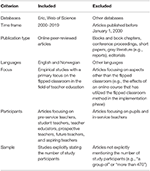
Table 2. Inclusion and exclusion criteria.
Two electronic databases were searched: Education Resources Data Center (ERIC) and Web of Science. Moreover, a manual search or "mitt-searching" (Chapman et al., 2010, p. 23) reference lists was conducted after searching the databases to "locate relevant studies missing in the database searches" (Røkenes and Krumsvik, 2014, p. 255).
Study Selection
Based on the PRISMA (Preferred Reporting Items for Systematic Reviews and Meta-Analyses) argument (Moher et al., 2009), Figure 1 shows the study choice process, including procedures for searching databases, searching manually, screening titles and abstracts, screening total texts, and selecting eligible manufactures for inclusion. The terminal database search was conducted on January 1, 2020; 92 manufactures were identified, from among which 17 duplicates were removed. All the potentially relevant articles went through a two-footstep screening process. The offset footstep was to exclude irrelevant articles by screening titles and abstracts. The second stride was to filter out unrelated articles by screening full texts. After the first pace, 12 manufactures from ERIC and 19 from Web of Science were excluded because they were unrelated to FC or not conducted in the field of teacher education. Afterward the second step, 11 articles from ERIC and two from Web of Scientific discipline were removed mainly due to inquiry focus and sampling, such as focusing on the furnishings of an online course instead of FC or the unclear number of study participants. Eventually, 33 articles were included for farther analysis, 22 from ERIC, nine from Web of Science, and two institute through a transmission search. Full texts were obtained of the 33 studies, and each study was reviewed and confirmed equally suitable for inclusion past the authors.
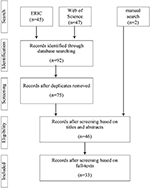
Figure 1. Flowchart diagram of the screening and selection process (Moher et al., 2009, p. 267).
Data Charting and Collation
Summaries of each study were adult based on indicators including authors, yr of publication, land location, research design, methodology, written report population and sample size, and brief descriptions of outcomes (Table 3). In Table 3, EG (experimental grouping) has taken courses in FC and CG (command group) has taken courses in a traditional classroom. A detailed table with written report title, discipline, enquiry questions, and characteristics of participants can be institute in the Supplementary Textile). Next, studies were analyzed using a coding and categorization strategy (Saldaña, 2016).

Tabular array 3. Overview of included studies.
Summarizing and Reporting Findings
In accordance to the fifth stage of Arksey and O'Malley'south (2005) framework for scoping reviews, the next sections summarize, report on, and discuss findings from the 33 included studies.
Results and Discussion of Findings
The coding and analyzing system included three principal categories (i.e., general characteristics, research methods, and enquiry foci), each with several subcategories.
Full general Characteristics of Included Studies
Distribution by Twelvemonth of Publication
The results from the database searches revealed that the beginning studies nearly FC in teacher instruction were published in 2014, while according to a previous review commodity the get-go study about FC was published in 2000 (Akçayir and Akçayir, 2018). Thus, FC inquiry in instructor education started virtually xiv years after the first published study on FC. As shown in Figure 2, even though FC enquiry in teacher teaching started tardily, according to Akçayir and Akçayir, this is still within the primary trend in the FC inquiry: "After more than than a decade, flipped classroom studies became popular amongst scholars; the numbers of such studies began to steadily increment after 2012" (2018, p. 337).

Figure two. Number of articles published by year.
Distribution by Country
Effigy 3 shows that nearly one third of the reviewed studies were conducted in the USA (x of 33 articles), while seven were conducted in Turkey. Six studies were conducted in Spain; two were conducted in each of Australia, South Africa, and S Korea; and one was conducted in each of Canada, Mainland china, Kuwait, and Norway.
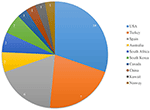
Effigy three. Distribution of manufactures conducted in diverse countries.
Distribution by Subject Discipline
Teacher education involves many subject disciplines, such as full general education, mathematics, scientific discipline, language, history, and health science. In this review, articles were categorized every bit "pedagogy" when courses were not aiming at a specific subject area subject area or a certain grouping of student teachers, such every bit an introduction to educational psychology course, an instructional methods course, and an educational engineering course. Effigy 4 shows that nearly one 3rd of the reviewed studies (10 articles out of 33) were in didactics. When further subdividing the studies into different subject disciplines, studies on FC in teacher didactics were mainly in the scientific discipline (half dozen articles), language (five articles), and mathematics (3 articles) disciplines.
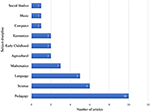
Figure 4. Distribution of studies conducted in unlike discipline disciplines.
Research Methods of Included Studies
Methodological Paradigm
Out of the 33 reviewed studies, more than half (17) did not explicitly identify their methodological paradigm. Therefore, we categorized the methodological paradigms in these manufactures based on the description in the method sections. Figure 5 shows that 22 (67%) of the studies used mixed methods for data collection, 8 (24%) used quantitative methods, and three (nine%) used qualitative methods.
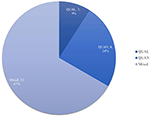
Effigy 5. Distribution of articles conducted using iii methodological paradigms.
Participants Involved in the Research
The current study focuses on the FC in teacher didactics; therefore, the authors were interested in the perceptions of pre-service teachers and the effects (e.m., bookish, appointment, and emotional) on pre-service teachers that were explored in all the reviewed studies. Effigy vi shows that participants who were taught using a FC approach were coded as the experimental group (EG), while those who were non were coded as the control group (CG). Of the 33 reviewed studies, 18 were conducted simply with participants who had learned using an FC approach; fourteen were conducted with participants who learned using both an FC and a traditional arroyo. Only one study (Erdogan and Akbaba, 2018) involved participants who had not taken any courses taught using the FC approach; this study investigated student teachers' opinions almost whether the social studies classroom should be flipped.
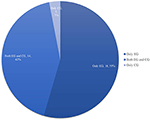
Figure six. Educatee participants involved in inquiry.
The number of EG members ranged from 14 to 371, while the number of CG members ranged from 9 to 162. The full number of participants across all 33 reviewed studies ranged from 9 to 371.
Instruments for Data Collection
Tabular array 4 lists all instruments used for data collection in the reviewed studies; S + [number] represents the studies reviewed (east.1000., S1 represents the first report in the reviewed list). Surveys, both paper-based and online, were the about commonly used tool (over two thirds) to explore participants' perceptions. Some studies applied both pre- and postal service-surveys (Fraga and Harmon, 2014; Pigeon and Dove, 2017a,b; Hall, 2018). Others conducted surveys after an FC intervention. Test scores were frequently used to collect data about students' academic performance, and scores could come up from last exams, tests, or quizzes. Interviews were often used to collect qualitative data, and focus-group interviews were used more frequently than ane-to-i interviews. Due to the characteristics of teacher education, lesson plans made past student teachers could also be considered an instrument. Classroom observation was conducted in FCs as well, with the observations in the form of both video-taped lessons and field notes. Student teachers' weekly journals, teacher educators' journals, and educatee teachers' feedback were all reflections of participants in instruction and learning and could be generalized as self-report materials. Tasks completed by student teachers likewise served as a tool to collect data. As a teaching methodology or pedagogical instructional model closely related with data and communication engineering (ICT), the FC is always linked with computers or the Internet. Therefore, a grade blog and pupil teachers' log information could also exist considered data. Furthermore, form assessments are often conducted at the end of a academy-level class, and so that information can too exist used to written report the FC.
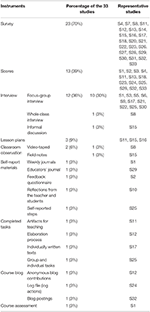
Table four. Instruments for data collection.
Research Foci of Included Studies
Most of the reviewed studies (27) seemed to exist concerned with students' perceptions of the FC, and some (14) also explored whether the FC could improve students' bookish operation (Figure 7). Other aspects examined were teacher educator's perceptions of the FC (ii studies), students' self-regulated learning (SLR; ii studies), students' anxiety (two studies), students' self-efficacy (two studies), and students' self-perceptions of pedagogical knowledge, technological knowledge, and technological pedagogical content noesis (TPACK; i written report).
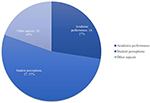
Figure 7. Research foci of included studies.
Student Perceptions of the Flipped Classroom
The top research focus reflected in 27 of the 33 articles is pupil perceptions of the FC teaching approach. Effigy 8 gives an overview of the aspects of student perceptions covered in those 27 studies.
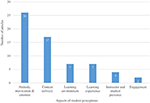
Effigy eight. Aspects of educatee perceptions of FC.
Tabular array 5 lists details virtually the different research foci and their representative articles. Each aspect volition be elaborated in the following text.
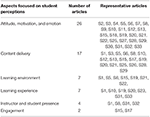
Tabular array 5. Different research foci on student perceptions and their representative articles.
Mental attitude, Motivation, and Emotion
The reviewed studies were categorized every bit examining attitude, motivation, and emotion when they explored student teachers' or teacher educators' attitudes, motivations, and emotions vis-à-vis the FC. Students had favorable attitudes and "a general positive opinion" (González-Gómez et al., 2016, p. 456, 458). For example, on flipped classes, students said "it was a actually proficient class" (Conner et al., 2014b, p. 74) and "this class was by far the all-time class we have taken" (Conner et al., 2014b, p. 74, 75). Student participants in Fraga and Harmon (2014) stated they liked the FC model because of "the fourth dimension flexibility" (p. 22, 24) and "beingness in control of their own individual learning" (p. 22, 24). Survey data from García-Sánchez and Santos-Espino (2017) showed that students were satisfied with the FC approach due to "remarkable facts that suggest participants were pleased with their artistic abilities" (p. 178). Focus-grouping interview information from Kurt (2017) indicated that all participants were "highly satisfied" (p. 216) because of "their perception of amend learning and their enjoyment of the flipped class model" (p. 216). Sayeski et al. (2015) compared three instructional conditions (independent, facilitated, and flipped) and concluded from students' survey information that "the nearly popular condition was the flipped classroom condition" (p. 302). In Ng'south study (2018), eight students attended the focus-group interview and "they all liked" (p. 72) the FC approach and its advantages of "promoting self-learning, innovation, and flexibility" (p. 72). FC was associated with "a general positive perception" (Jeong et al., 2018, p. 163) not merely in the contiguous learning environment merely also in the online environment; 91% of participants in van Wyk's (2018a) study strongly agreed that FC was a student-centered approach that increased pupil active learning and promoted and increased classroom interaction.
However, students' attitudes toward the FC compared to the TC were sometimes "variable" (Tomas et al., 2019, p. 12). A student in Conner et al. (2014a) "felt the flipped classroom approach went well, simply was challenging to keep up with if you forgot to picket the online videos prior to attending class" (p. 73). One student commented that in FCs students should "take responsibility for not just our own learning, only for our classmates as well" (Graziano, 2017, p. 124). A student in Dove and Dove (2017a) besides said that the responsibleness of learning was "completely on the students" (p. 138). Besides responsibleness, the responses of students who disliked the FC model "savage into two categories—issues of fourth dimension management and confusion" (Fraga and Harmon, 2014, p. 22). Tomas et al. (2019, p. 12) summarized students' attitudes toward FCs, stating "In spite of the variability in students' perceptions, the bulk appeared to respond positively to the flipped classroom approach." Furthermore, student teachers seemed to favor having flipped classes in the future. Survey data from Jeong et al. (2016) showed that 94% of participants agreed or strongly agreed that they were "willing to take more courses flipped" (p. 753). In Kurt (2017), one pupil said, "I believe my time to come students will do good from" (p. 217) flipping a language classroom. A participant in van Wyk (2018b) posted on the class blog that "I love flipping my class strategy and volition definitely use it" (p. xix). At that place were other varying opinions as well. For instance, survey data from Jeong et al. (2019a) revealed that students "agreed or strongly agreed to have more courses flipped" (p. 8) considering the flipped form was "interactive" (p. 10) and "interesting" (p. 10). Survey data from Graziano (2017) also showed that "the bulk of students said very likely or likely" (p. 125) in response to being asked about flipping their own classrooms in the hereafter. 1 student teacher commented in the informal discussion that "I will not have the time during my first few years of didactics to accurately gather or make videos on my own" (p. 124).
Several studies also explored students' motivation vis-à-vis FCs. Sengel (2016)'s survey data revealed that students in FCs "were willing to pay more" (p. 495) for the course and "were more motivated" (p. 495). Survey data from Tomas et al. (2019) indicated that "for a bulk of students, the flipped approach enhanced their motivation to acquire" (p. 12). Turan and Goktas (2018) focused their research on the impact of FCs on students' motivation; their survey information revealed that "the motivation for students in the experimental group was greater than that of the command group" (p. 142), which meant that students' motivation in FCs was greater than that in TCs. Turan and Goktas (2018) categorized motivation within the scope of ARCS theory, which identifies attention, relevance, confidence, and satisfaction every bit four critical components that bear on motivation. They discovered that "the attention level of students [in the experimental group, our interpretation] toward the course was clearly high" (p. 142). In fact, all the ARCS scores in Turan and Goktas (2018) were higher for the EG than for the CG. Turan and Goktas (2018) likewise found that the leading positive motivational factor was hands-on activities, while the leading negative motivational factor was difficulty in flipping. However, the survey data of Yough et al. (2017) revealed that "all analyses were non-pregnant with the exception of 2 motivation outcomes" (p. 6); even "preservice teachers in the traditional sections were more likely to report greater levels of intrinsic motivation […] and identification […] than those in flipped sections" (p. 6). Cabi (2018) too found that some students were not motivated because they "did not want to put an effort on it" (p. 214) and felt that "the topics were boring and unnecessary" (p. 214).
Jeong et al. (2016, 2018) explored students' emotions and cocky-evaluations later participating in FCs. Both studies had the same findings regarding positive and negative emotions: "the overall scores were very high in positive emotions" (2018, p. vii), with feelings of fun and enthusiasm having the highest score. Regarding negative emotions, boredom had the lowest score and concern had the highest. These findings indicated that many students agreed that the FC model was fun and that feelings of business organisation and nervousness had brought more negative emotions to them than colorlessness. In their contempo study, Jeong et al. (2019a) ended from survey data that "positive emotions were highly scored" (p. 11) by students in an FC compared to those in a TC.
Content Delivery
Equally 1 of the characteristics of FCs, content commitment differs from that in TCs where usually a lecturer presents his or her lecture during form time. In an FC, a lecturer normally records the lecture in advance and students admission the content outside grade time with different equipment. Sengel (2016) investigated equipment to admission online videos and constitute that the most ordinarily used equipment was "laptop[s] (95%) and cellphone[s] (80%)" (p. 492), while "IPod[sic] affect (27%) and IPad[sic] (36%) were the equipment" least used (p. 492). In addition, many researchers explored students' perceptions of content delivery and found they had both positive and negative opinions.
Some students thought that content delivered earlier grade, such as narrated presentations with "talking heads" and online lectures, were "convenient, effective and engaging" (Adnan, 2017, p. 215), "beneficial" (Conner et al., 2014b, p. 73), and "easy to watch and easy to follow" (Conner et al., 2014a, p. 71). Other benefits included having "the opportunity to pause" (Conner et al., 2014a, p. 71) and being able to "wait, stop, get back" (Dove and Dove, 2017b, p. 325) and to "stop and replay" (Tomas et al., 2019, p. 12). This arroyo also made students "come to the form prepared" (Cabi, 2018, pp. 213-214). A student instructor in Dove and Dove (2017b) stated that "PowerPoints […] brings you step by step about what is happening" (p. 325). Survey data from Graziano (2017) revealed that students "enjoyed the flexibility in delivering course content" (p. 124). Students in Jeong et al. (2016) had "a general positive opinion" (p. 752) near utilizing video lectures, stating they were of "not bad help to achieve learning goals" (p. 752). This sentiment was echoed by participants in Kurt (2017) who stated that videos helped them "learn the material meliorate" and made the cloth "more enjoyable" (p. 216). According to Lee and Bonk (2019), 23 of 27 participants reported that "class preparation through online video lectures helped them pay attending to their f2f classes" (p. 16) and "encouraged them to participate more actively in the group discussions" (p. 16). Jeong et al. (2019a)'due south survey data showed that "students agreed or strongly agreed that having video lectures or other "flipped" materials before class helped or help to achieve the learning goals and to consummate the in-course activities more than confidently or in an easier manner" (p. seven). The researchers noticed that "students attended form later on revising the flipped materials and were more than willing to participate in pupil-centered activities such as collaborative chores" (p. vii). Tomas et al. (2019) found that 98.8% of students believed that "viewing the flipped videos helped them to understand the primal concepts" (p. 11) in their grade. According to the survey data in Helgevold and Moen (2015)'s study, about participants "establish the online lectures to exist a useful learning arena" (p. 35) considering they could command "time, placement and pace" (p. 35). Similarly, Kurt (2017)'s focus-group interview information showed that participants "all appreciated watching the lectures at any time they wanted and being able to make up one's mind on their own pacing. They paused, rewound and replayed the video lectures equally they needed" (p. 217).
Meanwhile, some students encountered "technological issues" (Conner et al., 2014a, p. 72) and "lost their attention" (Adnan, 2017, p. 215) while watching the videos or narrated presentations. Some idea the content was "difficult" or "non sufficient" (Cabi, 2018, p. 214). In Conner et al. (2014b), 1 student instructor stated that "honestly they could take but given us the handouts and I would have gotten equally much from information technology" (pp. 72-73). Students in the Graziano (2017) report acknowledged they were non "'tech savvy' or comfortable with technology" (p. 126); furthermore, making videos was "time consuming" (p. 124, 126) for teachers. In Ng'southward report (2018, pp. 72-73), student teachers mentioned difficulties they encountered when watching online videos: (1) "they did not have a instructor to ask when they could non understand the online video"; (2) "they had to wait until the post-obit calendar week to ask the teacher when they could not understand a concept"; and (3) "they might forget virtually asking the questions." These difficulties were also encountered by participants in Sengel'southward report (2016), where "seventy% of them indicated that they did non accept chance to inquire for these bug someone outside of the class time" (p. 493). Accordingly, Ng (2018) suggested that when utilizing an FC education arroyo, teacher educators could suggest student teachers email or contact their teacher educators "if they encounter any difficulties prior to the adjacent lesson" (p. 73). Sammel et al. (2018) establish that "the median number of online videos watched by the participants was only four out of eight" (p. 55), and students were not well-engaged even though they "knew that 50% of their final mark was derived from the video content" (p. 55). Sammel et al. (2018) also discovered that fifty-fifty though students highlighted convenience in terms of time management and repeatability, they still preferred face up-to-face lectures and believed information technology was what they paid for as campus students.
1 pupil in Conner et al. (2014b, p. 73) said "Don't just read me what is on the PowerPoint. Nosotros are in college, we tin read." Other student teachers in Conner et al. (2014b, p. 73) suggested "providing a set of partially completed notes for hereafter students considering that would encourage the students to scout the online videos to 'make full in the blanks in your notes"'. In Ford (2015), the instructor educator attempted to use two formats to record videos—teach an imaginary classroom and create big slides or storyboards. García-Sánchez and Santos-Espino (2017) found that student teachers preferred "a lecture displayed as some variant of slideshow, mostly combined with narrator'due south face up and voice" (p. 176) and "uncomplicated record-and-publish software tools" (p. 176) rather than "more sophisticated settings" (p. 176) where instructors "used puppets and cartoons every bit characters" (p. 176). Furthermore, the length of a video lecture with the FC arroyo was explored in some of the reviewed studies. For case, Wagner et al. (2013) suggested not making videos longer than 10 min considering very few college students (35.7%) reported enjoying watching long videos.
Some teachers provided online lectures and quizzes as out-of-class activities. For example, González-Gómez et al. (2016) provided two types of online quizzes, "multiple-choice online quizzes about the contents taught in the video lessons that students had to complete after watching or/and reading the proposed material" (p. 456) and "questionnaires inserted in the video lessons" (p. 456). In these cases, students had to provide the right answer to be able to watch the remaining part of the video. The point was to encourage the students to picket the complete video lessons. Jeong et al. (2016) institute that online quizzes were "useful to point out and overcome the virtually circuitous contents" (p. 753). In González-Gómez et al. (2016), 87 of 101 participants agreed or strongly agreed the online quizzes "provided together with the multimedia textile had allowed them to achieve the learning objectives" (p. 457), and "nearly 90% of students were able to indicate out the near circuitous contents before the class and therefore to focus to overcome them after completing the online quizzes provided with the video lessons" (pp. 457-458). However, students in Conner et al. (2014b)'southward study argued that online quizzes "were non very challenging and that being allowed to apply notes during the quiz was pointless" (p. 73) and it was "very easy to forget" (p. 73).
Learning Environment
In the review, learning surround can be understood as focusing on psychosocial factors in the classroom. Hither, the FC was regarded as "flexible," "stress complimentary" (Adnan, 2017, p. 216), and potentially improving "the confidence" (Conner et al., 2014a, p. 72) of students. Karaaslan and Çelebi (2017)'s survey data indicated "the students generally had positive attitudes" (p. 652) regarding the learning surround. Participants in Kurt (2017)'south written report also had "positive perceptions of their experiences in the flipped learning environment" (p. 216); they mentioned that the learning surround was "student-centered, more positive and less stressful" (p. 217). Still, some students in Conner et al. (2014a)'south study had the opposite stance, stating the FC was "a waste matter of time and did not contribute to learning" (p. 73).
Graziano (2017) institute that the learning environment was more interactive; one student said, "there is more student–teacher interaction in a flipped class" (p. 124). According to Jeong et al. (2016), over 91% participants "thought that the course was more interactive than other courses taken in the same schoolhouse" (p. 753). By analyzing video-taped classroom observations, Dove and Dove (2017b) plant that FCs (flipped both with teacher'due south videos and lecture videos from Khan Academy) "were able to incorporate more than opportunities for interaction and communication within and betwixt students and the instructor" (p. 328). In van Wyk (2018b)'southward written report, a participant said on the blog that "The flipped method helps me to interact with my classmates on specific tasks and establish positive relationships with others" (p. 22).
Learning Experience
The reviewed articles were coded for learning experience if they explored participants' experiences with FC both inside and exterior classrooms. Students in Adnan (2017)'s written report talked about their learning experience with FC, maxim they believe FC can enhance learning because information technology encourages "social classroom learning" (p. 218) and they tin learn "from each other in the classroom" (p. 218). Students in Jeong et al. (2019a)'due south report considered the FC course "a valuable learning experience" (p. 10) and "significantly more interactive" (p. 7), maxim it "provided a higher perception almost the learning process for the same contents" (p. seven). Survey data in Lee and Bonk (2019)'s report revealed that the flipped grade integrated with team-based learning can offer students "much higher and richer learning experiences" (p. 17). The findings of the reviewed manufactures revealed that students connected their learning experiences with their responsibility. For instance, students in Dove and Dove (2017b) felt they were "encouraged" (p. 325) to take responsibility for their ain learning, and they "positively reacted to the increased opportunities for structured minor group activities" (p. 325). Similarly, pupil teachers in van Wyk (2018b)'s study stated that FC "created a positive lived feel" (p. 13) and forced them to "have responsibility for their own learning" (p. 13). According to van Wyk (2018a), 97% of student teachers agreed that FC pedagogy forced them to "have responsibility for their own learning" (p. 260). Lee and Bonk (2019) institute that because students were forced to have responsibility, "at that place is a significant difference of learning fourth dimension" (p. 16) in FCs compared to TCs and that students spent more than time in FCs.
Teacher and Pupil Presence
Both instructors' classroom role and guiding office were emphasized in Adnan (2017), every bit instructors were in the classroom "interacting, answering questions and providing help" (p. 216). Pigeon and Dove (2017b)'southward survey and interview data revealed that "students were overwhelmingly positive about the role of the teacher in their learning" (p. 324). In van Wyk'southward report (2018a), participants perceived that instructors played "an important role in creating a positive lived experience" (p. 263) in open-distance e-learning environments. Students in Lee and Bonk (2019)'southward written report reported they interacted "more frequently" (p. 18) with instructors in FCs and "received more frequent feedback on their learning" (p. 18) from instructors. In addition, relationships with instructors seemed more positive in FCs; for example, 81.iv% of participants in Lee and Bonk (2019)'south report reported that instructors were "accessible and very helpful" (p. 18). The teacher educator in Ford (2015)'southward written report obtained a high rating on teaching evaluations. Not simply were relationships with instructors improved simply relationships with peers were "quite shut and comfortable" (p. 19), equally a student in the Lee and Bonk (2019) report stated. Participants in van Wyk (2018b)'southward study agreed that "the instructor played an of import role when it came to decision making almost what out-of-class and in-class activities should be carefully integrated in order for students to understand the strategy and be motivated to prepare for the class" (p. thirteen). However, they "were less in agreement … concerning the role that teachers play in moving around and profitable students who are struggling while at the same fourth dimension correcting misconceptions and providing one-on-one tutoring" (p. 13). In improver to instructor presence, Adnan (2017) examined student presence and found that "almost all students mentioned their adaptation to new roles/competencies" (p. 217) for the flipped course. The students had been educated in TCs since they started school, so it would naturally take some time for them to conform to the new didactics arroyo.
Engagement
Regarding students' date in learning, the reviewed studies had by and large positive results and included merely a few negative opinions. The survey findings of Tomas et al. (2019) painted "an encouraging moving picture of students' engagement with the flipped videos" (p. 9) and reflected that "the bulk of students watched the flipped videos more than than once, generally prior to attending course" (p. nine). Nonetheless, the teacher educator in Ford (2015)'s study found through classroom observations that "not all students were watching the videos" (p. 375). Analyses of the empirical information in Helgevold and Moen (2015) showed that "this flipped classroom model, to some extent, seems to have stimulated students' participation and engagement" (p. 40). Students in Lee and Bonk (2019)'s study reported they were "immersed into learning in course time" (p. 20) and "never dozed at all" (p. 20) in FCs. By analyzing data from the Teachers' Sense of Efficacy Scale (TSES) developed by Tschannen-Moran and Hoy (2001), Kurt (2017) found "there was a significant difference betwixt the experimental and command groups in their gain scores … and the subscales of educatee engagement and classroom management" (p. 215), indicating the differences in students' appointment in FCs compared to TCs were statistically significant in favor of FCs.
Academic Performance in a Flipped Classroom
Whether FCs can influence students' learning outcomes was one of the inquiry foci in nearly half the reviewed studies (14 of 33) that examined students' academic operation in FCs. Table 6 lists statistical results nigh students' academic performance in FCs and the representative manufactures.

Table half dozen. Students' academic performance in flipped classrooms.
Of the fourteen studies, 4 (Choi and Lee, 2015; González-Gómez et al., 2016; Kurt, 2017; Jeong et al., 2018) found a meaning difference between the EG and the CG in favor of the EG. Kurt (2017) found the EG "overperformed" (p. 216) during terminal exams compared to the CG and that "the difference was statistically pregnant" (p. 216). The statistical results from Jeong et al. (2018)'s study "demonstrated that the flipped-classroom model gave better outcomes than previous classes not applying the flipped-classroom model" (p. 8), as "significant differences at the 95% significance level (p < 0.05) were observed" (p. half-dozen) in favor of the FC. Choi and Lee (2015) establish that the FC approach was more effective for students to acquire noesis and skills for instructional textile production and that the furnishings were more observable for a difficult job.
Yough et al. (2017) and van Wyk (2018b) institute no statistically significant differences in learning outcomes betwixt the EG and the CG. However, these two studies had similar empirical findings to van Wyk (2018a) in that they establish the FC teaching approach "enhanced" (van Wyk, 2018a, p. 262) students' bookish achievement. Yough et al. (2017)'southward statistical assay revealed that "participants in the flipped sections had increased meaningful learning outcomes over participants in the traditional sections" (p. half dozen). "Preservice teachers in the flipped sections were more likely to score college on items related to topics of information processing, development, and motivation compared with traditional section students" (Yough et al., 2017, p. half dozen). In comparing student teachers' pretest and posttest results, van Wyk (2018b) found that FC pedagogy is "a more effective digital pedagogical tool" (p. 12) and that the EG "outperformed the command grouping […] in terms of the concluding examination score" (p. 12). Furthermore, one of the participants in van Wyk (2018b)'s study stated "the flipped class strategy made it easier for me to acquire better [.…] I am a visual learner. The videos help to better my understanding and increased my results in the course […] I increased my examination concluding mark to distinction (83%)" (p. 21).
Contrary to the above studies, iii studies (Fraga and Harmon, 2014; Sengel, 2016; Cabi, 2018) found no significant departure in learning outcomes between the EG and the CG. Based on a statistical assay, Sengel (2016) found "the flipped classroom model and traditional model had about similar positive effects on the achievement" (p. 494).
Findings from the other iii studies (Sayeski et al., 2015; Adnan, 2017; Almodaires et al., 2019) were mixed. Adnan (2017)'s statistical results revealed no significant difference between the EG and the CG on midterm/quizzes and final e-portfolio scores; however, the EG accomplished significantly college essay scores. Almodaires et al. (2019) plant a significant deviation among the three examination results in favor of the EG but no significant departure in the final form. Sayeski et al. (2015) plant that students' learning outcomes were statistically significantly meliorate in the flipped instructional condition than in the other two instructional conditions (homework and instructor facilitated) for a Peer-Assisted Learning Strategies (PALS) module (PALS is a reading strategy for Grades 2–half dozen). All the same, at that place were no statistically significant differences for the Classroom Management and Accommodations modules.
Different from the abovementioned studies that examined academic performance through scores and explored the affect of FCs on students' learning outcomes, Montgomery et al. (2019) investigated the human relationship betwixt log file data and students' learning outcomes. They discovered that among all the log file data, "access day-of-the-week and access frequency" were "the strongest predictors for student success" (p. 114), while location of access had "a weak relationship" (p. 121) with academic performance.
Other Aspects of a Flipped Classroom Teaching Approach
Other aspects of FCs researched in the reviewed studies include instructor educator'southward perceptions (two studies), students' SLR (two studies), students' anxiety (2 studies), students' cocky-efficacy beliefs (two studies), and students' self-perceptions of pedagogical knowledge, technological noesis, and TPACK (one study).
Teacher Educator's Perceptions
Compared to 27 of 33 studies concerning pupil teachers' perceptions, there were fewer studies on teacher educators' perceptions. Merely ii studies, those by Ford (2015) and Tomas et al., 2019), investigated teacher educators' perceptions. The fundamental finding of the latter study was that "boosted teacher-led instruction, scaffolding and guidance were required in-form to review the concepts explored in the flipped videos, and to back up students to consummate the active learning tasks successfully" (p. 13). Ford (2015) shared her own experiences of teaching using the FC approach and her strategies for creating a flipped course, concluding that her feel strengthened her desire "to continue using this teaching model" (p. 378).
Students' Self-Regulated Learning
Different from Lee and Bonk (2019)'s written report that investigated students' perceptions of their own SRL, Montgomery et al. (2019) utilized learning analytics (LA) to investigate students' utilise of SRL. They used pretests and posttests, group and individual tasks, and self-reported steps to examine whether the FC represented good instruction with reference to self-regulation principles. Montgomery et al. (2019)'s quantitative data most students' SRL were positive. Students were self-regulating and learning on their own by watching online lectures; students were able to larn both content and process knowledge on their own from the online videos; students were able to employ their acquired online knowledge in group projects; individual students could apply the knowledge they caused online in their ain work; and students developed their self-regulation. These findings represent with van Wyk (2018b)'due south conclusion that FC pedagogy "indeed enhanced students' self-directed learning to support their learning significantly" (p. xiii). Co-ordinate to Montgomery et al. (2019), "all half-dozen SRL behaviors [online access location, solar day-of-the-week, time-of-day, online frequency, online regularity and exam review patterns, our interpretation] were revealed to have weak to moderate significant relationships with academic achievement" (p. 114).
Students' Anxiety
Dove and Dove (2017a,b) were interested in students' anxiety about both learning and teaching mathematics. The Dove and Dove (2017a) constitute "significantly greater decreases for general mathematics anxiety" (p. 134) for the EG simply no significant difference in anxiety about education mathematics between the EG and the CG. Pigeon and Dove (2017b) institute that the FC with teacher videos was significantly improve at decreasing students' general math anxiety than the FC with lecture videos from Khan Academy and TC. It was also significantly better at decreasing students' anxiety about instruction mathematics than the FC with lecture videos from Khan Academy.
Students' Self-Efficacy Behavior
Kurt (2017) found that students taught in FCs had "a higher level of self-efficacy behavior" (p. 211) and that, with regard to teachers' sense of students' self-efficacy, "there was a meaning deviation between the experimental and command groups" (p. 215) in favor of the EG. Based on observed quantitative data, González-Gómez et al. (2019) concluded that the FC had "a meaning positive impact in the science cocky-efficacy beliefs and attitudes toward science" (p. 9).
Students' Self-Perceptions of Pedagogical, Technological, and Technological Pedagogical Content Cognition
Hall (2018)'due south quantitative study revealed that after an FC intervention, students' self-perceptions of pedagogical cognition and the application of TPACK were statistically meaning. Yet, students' cocky-perceptions of technological cognition and TPACK were non statistically pregnant.
Conclusion, Report Limitations, and Future Research
This scoping review examined 33 peer-reviewed studies on FCs in teacher education in terms of general characteristics, research methods, and research foci in the existing literature. The main findings from this review written report revealed answers to aforementioned research questions. The trends in FC in instructor didactics are that there was a gradual and steady increase in publications on the use of FCs, most existing studies in English were conducted in the USA, Turkey, and Spain, and courses with FC inside the disciplines of pedagogy and language were normally researched. Additionally, mixed methods were more commonly used than a single quantitative or qualitative method, and surveys, test scores, and interviews were pop information collection instruments among researchers. With respect to the second enquiry question, two chief research foci were identified that researchers were primarily concerned with students' perceptions and their academic performance. The analysis of students' perceptions revealed six outcomes (i. Attitude, motivation, and emotion; 2. Content delivery; three. Learning environment; 4. Learning feel; 5. Instructor and pupil presence; 6. Engagement). With regard to students' academic performance, though researchers reported unlike findings, more than one-half of their studies revealed that FC could better students' academic performance. This research finding echoes the previous inquiry "that non-traditional teaching are able to promote academic accomplishment" (Jeong et al., 2019b).
The scoping review provided an overview of FC studies conducted in the domain of instructor instruction. The categories adult in the review might exist adapted to guide future reviews of FC teaching both inside and exterior teacher education. Furthermore, the report findings might indicate useful directions for future FC studies to identify disquisitional noesis gaps and opportunities. For example, just one article (Pigeon and Pigeon, 2017a) examined consecutive FCs, and as students might need fourth dimension to become used to learning with a new teaching approach, more than research on consecutive FCs should be conducted.
This review report should be viewed as a pioneering attempt to explore studies on FCs in teacher education rather than an exhaustive review. Even though only 33 manufactures were found by searching the two databases and through a manual search, there might be other potential articles that could be found in other databases, such as Scopus and Scientific discipline Straight. As FC instruction continues to abound in popularity, more review studies volition likely be conducted and listed in more databases. Furthermore, this review utilized specific inclusion and exclusion criteria to screen identified articles. These criteria allowed the authors to narrow the telescopic of the search to select the most representative studies. However, different search criteria might have produced slightly unlike search results. For example, if volume capacity were included, the data analysis might accept been dissimilar. Further research should address review research identified by searching more than databases and should extend to include more publication types, such as book chapters and conference proceedings.
Information Availability Argument
The original contributions presented in the study are included in the article/Supplementary Fabric, further inquiries tin can be directed to the corresponding author/s.
Author Contributions
HH is the get-go author of the article and has done the database searchers, analyzed the data, and written the primary parts of the manuscript. FR is the second author of the article and has developed the conceptual framework, developed the research design, aided in the analysis, and writing/revisions of the manuscript.
Conflict of Interest
The authors declare that the research was conducted in the absence of whatsoever commercial or fiscal relationships that could be construed every bit a potential conflict of interest.
Supplementary Material
The Supplementary Material for this article can be constitute online at: https://world wide web.frontiersin.org/articles/10.3389/feduc.2020.601593/total#supplementary-material
References
Abeysekera, Fifty., and Dawson, P. (2015). Motivation and cerebral load in the flipped classroom: definition, rationale and a phone call for inquiry. High. Educ. Res. Dev. 34, ane–14. doi: ten.1080/07294360.2014.934336
CrossRef Full Text | Google Scholar
*Adnan, M. (2017). Perceptions of senior-year ELT students for flipped classroom: a materials evolution form. Comput. Assist. Lang. Learn. 30, 204–222. doi: x.1080/09588221.2017.1301958
CrossRef Total Text | Google Scholar
Akçayir, G., and Akçayir, M. (2018). The flipped classroom: a review of its advantages and challenges. Comput. Educ. 126, 334–345. doi: 10.1016/j.compedu.2018.07.021
CrossRef Full Text | Google Scholar
*Almodaires, A. A., Alayyar, Grand. Thou., Almsaud, T. O., and Almutairi, F. Yard. (2019). The effectiveness of flipped learning: a quasi-experimental study of the perceptions of kuwaiti pre-service teachers. Int. Educ. Stud. 12:10. doi: 10.5539/ies.v12n1p10
CrossRef Total Text | Google Scholar
Arksey, H., and O'Malley, L. (2005). Scoping studies: towards a methodological framework. Int. J. Soc. Res. Methodol. 8, xix–32. doi: 10.1080/1364557032000119616
CrossRef Full Text | Google Scholar
Baker, J. W. (2000). "The "classroom flip": using spider web course management tools to become the guide by the side," in Newspaper presented at The 11th International Conference on College Teaching and Learning. Jacksonville, FL: Florida Community College at Jacksonville.
Google Scholar
Bergmann, J., and Sams, A. (2012). Flip your Classroom: REACH every Educatee in every Course Every Day. Washington, DC: Internal Society for Technology in Education.
Google Scholar
Bergmann, J., and Sams, A. (2009). Remixing chemistry class: two colorado teachers make vodcasts of their lectures to free up grade time for hands-on activities. Learn. Lead. Technol. 36, 22–27.
Google Scholar
Betihavas, V., Bridgman, H., Kornhaber, R., and Cross, M. (2016). The prove for 'flipping out': a systematic review of the flipped classroom in nursing educational activity. Nurse Educ. Today 38, xv–21. doi: x.1016/j.nedt.2015.12.010
PubMed Abstract | CrossRef Full Text | Google Scholar
Bishop, J. 50., and Verleger, M. A. (2013). "The flipped classroom: a survey of the research," in 120th American Guild for Engineering Education Almanac Conference and Exposition, 30, 1–18. doi: 10.18260/1-2–22585
CrossRef Total Text | Google Scholar
*Cabi, Eastward. (2018). The impact of the flipped classroom model on students' bookish accomplishment. Int. Rev. Res. Open Dis. Learn. nineteen, 202–221. doi: 10.19173/irrodl.v19i3.3482
CrossRef Full Text | Google Scholar
Chapman, A. Fifty., Morgan, L. C., and Gartlehner, One thousand. (2010). Semi-automating the manual literature search for systematic reviews increases efficiency. Health Inform. Libr. J. 27, 22–27. doi: 10.1111/j.1471-1842.2009.00865.x
PubMed Abstract | CrossRef Full Text | Google Scholar
*Choi, J., and Lee, Y. (2015). To what extent does 'Flipping' make lessons effective in a multimedia production class? Innov. Educ. Teach. Int. 55, 3–12. doi: 10.1080/14703297.2015.1123105
CrossRef Full Text | Google Scholar
*Conner, North. W., Rubenstein, E. D., DiBenedetto, C. A., Stripling, C. T., Roberts, T. Chiliad., and Stedman, Due north. Fifty. P. (2014a). Examining pupil perceptions of flipping an agricultural teaching methods course. J. Agric. Educ. 55, 65–77. doi: 10.5032/jae.2014.05065
CrossRef Full Text | Google Scholar
*Conner, N. Westward., Rubenstein, E. D., DiBenedetto, C. A., Stripling, C. T., Roberts, T. G., and Stedman, N. 50. P. (2014b). Flipping an agricultural education teaching methods course. J. Agricult. Educ. 55, 66–78. doi: 10.5032/jae.2014.02066
CrossRef Total Text | Google Scholar
Daudt, H. Thou., van Mossel, C., and Scott, S. J. (2013). Enhancing the scoping study methodology: a big, inter-professional squad's feel with Arksey and O'Malley'south framework. BMC Med. Res. Methodol. 13:48. doi: 10.1186/1471-2288-13-48
CrossRef Full Text | Google Scholar
Davis, K., Drey, North., and Gould, D. (2009). What are scoping studies? A review of the nursing literature. Int. J. Nursing Stud. 46, 1386–1400. doi: 10.1016/j.ijnurstu.2009.02.010
CrossRef Full Text | Google Scholar
DeLozier, Due south. J., and Rhodes, M. Chiliad. (2017). Flipped classrooms: a review of key ideas and recommendations for practice. Educ. Psychol. Rev. 29, 141–151. doi: 10.1007/s10648-015-9356-9
CrossRef Full Text | Google Scholar
*Dove, A., and Dove, Eastward. (2017a). How flipping much? Consecutive flipped mathematics courses and their influence on students' anxieties and perceptions of learning. J. Comput. Math. Sci. Teach, 36, 129–141.
Google Scholar
*Dove, A., and Pigeon, Eastward. (2017b). Flipping preservice elementary teachers' mathematics anxieties. Contemporary Issues Technol. Teach. Educ. 17, 312–335.
Google Scholar
*Erdogan, East., and Akbaba, B. (2018). Should we flip the social studies classrooms? The opinions of social studies teacher candidates on flipped classroom. J. Educ. Learn. vii, 116–124. doi: 10.5539/jel.v7n1p116
CrossRef Full Text | Google Scholar
*Ford, P. (2015). Flipping a math content course for pre-service elementary school teachers. Primus 25, 369–380. doi: ten.1080/10511970.2014.981902
CrossRef Full Text | Google Scholar
*Fraga, L. 1000., and Harmon, J. (2014). The flipped classroom model of learning in higher pedagogy: an investigation of preservice teachers' perspectives and achievement. J. Dig. Learn. Teach. Educ. 31, 18–27. doi: 10.1080/21532974.2014.967420
CrossRef Full Text | Google Scholar
*García-Sánchez, S., and Santos-Espino, J. Thousand. (2017). Empowering pre-service teachers to produce ubiquitous flipped classes. Contour Issues in Teachers Prof. Dev. 19, 169–185. doi: ten.15446/profile.v19n1.53857
CrossRef Full Text | Google Scholar
*González-Gómez, D., Jeong, J. South., Airado Rodríguez, D. A., and Cañada-Cañada, F. (2016). Functioning and perception in the flipped learning model: an initial approach to evaluate the effectiveness of a new didactics methodology in a general science classroom. J. Sci. Educ. Technol. 25, 450–459. doi: ten.1007/s10956-016-9605-ix
CrossRef Full Text | Google Scholar
*González-Gómez, D., Jeong, J. Southward., and Cañada-Cañada, F. (2019). Enhancing science cocky-efficacy and attitudes of pre-service teachers (PST) through a flipped classroom learning environs. Interact. Acquire. Environ. i-12. doi: 10.1080/10494820.2019.1696843
CrossRef Full Text | Google Scholar
Grant, M. J., and Booth, A. (2009). A typology of reviews: an analysis of 14 review types and associated methodologies. Health Inform. Libr. J. 26, 91–108. doi: 10.1111/j.1471-1842.2009.00848.x
PubMed Abstract | CrossRef Total Text | Google Scholar
*Graziano, M. J. (2017). Peer instruction in a flipped teacher pedagogy classroom. TechTrends 61, 121–129. doi: 10.1007/s11528-016-0077-ix
CrossRef Full Text | Google Scholar
*Hall, J. A. (2018). Flipping with the first principles of educational activity: an test of preservice teachers' engineering integration development. J. Dig. Learn. Teach. Educ. 34, 201–218. doi: 10.1080/21532974.2018.1494520
CrossRef Full Text | Google Scholar
*Helgevold, N., and Moen, V. (2015). The use of flipped classrooms to stimulate students' participation in an academic grade in initial instructor educational activity. Nordic J. Dig. Literacy 9, 29–42
Google Scholar
*Jeong, J. S., González-Gómez, D., and Cañada-Cañada, F. (2019a). How does a flipped classroom course touch the affective domain toward scientific discipline form? Inter. Larn. Environ. 1-13. doi: 10.1080/10494820.2019.1636079
CrossRef Full Text | Google Scholar
*Jeong, J. S., Cañada-Cañada, F., and González-Gómez, D. (2018). The study of flipped-classroom for pre-service science teachers. Educ. Sci. viii:163. doi: 10.3390/educsci8040163
CrossRef Total Text | Google Scholar
*Jeong, J. South., González-Gómez, D., and Cañada-Cañada, F. (2016). Students' perceptions and emotions toward learning in a flipped general science classroom. J. Sci. Educ. Technol. 25, 747–758. doi: x.1007/s10956-016-9630-8
CrossRef Full Text | Google Scholar
Jeong, J. S., González-Gómez, D., Cañada-Cañada, F., Gallego-Picó, A., and Bravo, J. C. (2019b). Effects of active learning methodologies on the students' emotions, self-efficacy beliefs and learning outcomes in a science altitude learning form. J. Technol. Sci. Educ. 9, 217–227. doi: 10.3926/jotse.530
CrossRef Full Text | Google Scholar
*Karaaslan, H., and Çelebi, H. (2017). ELT teacher education flipped classroom: an analysis of chore challenge and student teachers' views and expectations. J. Language Ling. Stud. 13, 643–666.
Google Scholar
*Kurt, G. (2017). Implementing the flipped classroom in teacher education: evidence from Turkey. Educ. Technol. Soc. 20, 211–221
Google Scholar
Lage, M. J., Platt, G. J., and Treglia, M. (2000). Inverting the classroom: a gateway to creating an inclusive learning environment. J. Econ. Educ. 31, 30–43. doi: 10.1080/00220480009596759
CrossRef Full Text | Google Scholar
*Lee, J., and Bonk, C. J. (2019). Integrating flipped learning with team-based learning in a pre-service teacher education form: experiences and outcomes. Int. J. eLearn. xviii, five–29
Google Scholar
Lo, C. Yard., Hew, K. F., and Chen, Grand. (2017). Toward a set up of design principles for mathematics flipped classrooms: a synthesis of inquiry in mathematics instruction. Educ. Res. Rev. 22, l–73. doi: 10.1016/j.edurev.2017.08.002
CrossRef Full Text | Google Scholar
Moher, D., Liberati, A., Tetzlaff, J., Altman, D. G., and the PRISMA Group (2009). Preferred reporting items for systematic reviews and meta-analyses: the PRISMA statement. Ann. Intern. Med. 151, 264–269. doi: x.7326/0003-4819-151-four-200908180-00135
CrossRef Full Text | Google Scholar
*Montgomery, A. P., Mousavi, A., Carbonaro, M., Hayward, D. V., and Dunn, W. (2019). Using learning analytics to explore self-regulated learning in flipped blended learning music teacher education. Br. J. Educ. Technol. 50, 114–127. doi: x.1111/bjet.12590
CrossRef Full Text | Google Scholar
*Ng, Eastward. M. W. (2018). Integrating cocky-regulation principles with flipped classroom pedagogy for first year university students. Comput. Educ. 126, 65–74. doi: 10.1016/j.compedu.2018.07.002
CrossRef Full Text | Google Scholar
O'Flaherty, J., Phillips, C., Karanicolas, South., Snelling, C., and Winning, T. (2015). The use of flipped classrooms in higher education: a scoping review. Int. High. Educ. 25, 85–95. doi: ten.1016/j.iheduc.2015.02.002
CrossRef Full Text | Google Scholar
Røkenes, F. G., and Krumsvik, R. J. (2014). Development of student teachers' digital competence in instructor teaching. Nordic J. Dig. Literacy 9, 250–280
Google Scholar
Saldaña, J. (2016). The Coding Manual for Qualitative Researchers 3rd Edn. Los Angeles, CA: Sage.
Google Scholar
*Sammel, A., Townend, One thousand., and Kanasa, H. (2018). Hidden expectations behind the promise of the flipped classroom. Coll. Teach. 66, 49–59. doi: 10.1080/87567555.2016.1189392
CrossRef Total Text | Google Scholar
*Sayeski, Yard. 50., Hamilton-Jones, B., and Oh, S. (2015). The efficacy of IRIS "STAR Legacy" modules under dissimilar instructional weather. Teach. Educ. Special Educ. 38, 291–305. doi: 10.1177/0888406415600770
CrossRef Full Text | Google Scholar
*Sengel, E. (2016). Using the 'flipped classroom' to enhance physics accomplishment of the prospective instructor touch on of flipped classroom model on physics course. Comput. Assist. Lang. Learn. 30, 1–21. doi: x.1080/09588221.2015.1111910
CrossRef Total Text | Google Scholar
Steen-Utheim, A. T., and Foldnes, Due north. (2018). A qualitative investigation of student engagement in a flipped classroom. Teach. Higher Educ. 23, 307–324. doi: 10.1080/13562517.2017.1379481
CrossRef Full Text | Google Scholar
*Tomas, L., Evans, Northward., Doyle, T., and Skamp, K. (2019). Are commencement year students gear up for a flipped classroom? A case for a flipped learning continuum. Int. J. Educ. Technol. High. Educ. 16, ane–22. doi: 10.1186/s41239-019-0135-iv
CrossRef Full Text | Google Scholar
Tschannen-Moran, Thousand., and Hoy, A. W. (2001). Teacher efficacy: capturing an elusive construct. Teach. Teach. Educ. 17, 783–805. doi: x.1016/S0742-051X(01)00036-1
CrossRef Total Text | Google Scholar
Turan, Z., and Akdag-Cimen, B. (2019). Flipped classroom in English linguistic communication teaching: a systematic review. Comput. Assis. Lang. Learn. 10, 590–606. doi: 10.1080/09588221.2019.1584117
CrossRef Full Text | Google Scholar
*Turan, Z., and Goktas, Y. (2018). Innovative redesign of teacher pedagogy ICT courses: how flipped classrooms touch motivation? J. Educ. Futurity xiii, 133–144.
Google Scholar
*van Wyk, Thousand. M. (2018a). Economic science student teachers' views on the usefulness of a flipped classroom pedagogical approach for an open altitude eLearning environment. Int. J. Inform. Learn. Technol. 35, 255–265. doi: 10.1108/IJILT-07-2017-0068
CrossRef Total Text | Google Scholar
*van Wyk, G. M. (2018b). Flipping the economics class in a instructor education form. Technol. Knowl. Larn. 24, 373–399. doi: 10.1007/s10758-018-9377-9
CrossRef Total Text | Google Scholar
Wagner, D., Laforge, P., and Cripps, D. (2013). "Lecture material retention: a first trial study on flipped classroom strategies in electronic systems engineering at the University of Regina," in Proceedings of the Canadian Technology Didactics Association Briefing- École Polytechnique de Montréal. (Quebec). doi: 10.24908/pceea.v0i0.4804
CrossRef Full Text | Google Scholar
*Yough, M., Merzdorf, H. East., Fedesco, H. N., and Cho, H. J. (2017). Flipping the classroom in teacher education: implications for motivation and learning. J. Teach. Educ. seventy, 1–13. doi: x.1177/0022487117742885
CrossRef Full Text | Google Scholar
*^Asterisks indicate the articles included in the current review study.
birminghamstruity.blogspot.com
Source: https://www.frontiersin.org/articles/10.3389/feduc.2020.601593/full
0 Response to "The Use of Flipped Classrooms in Higher Education a Scoping Review"
Post a Comment